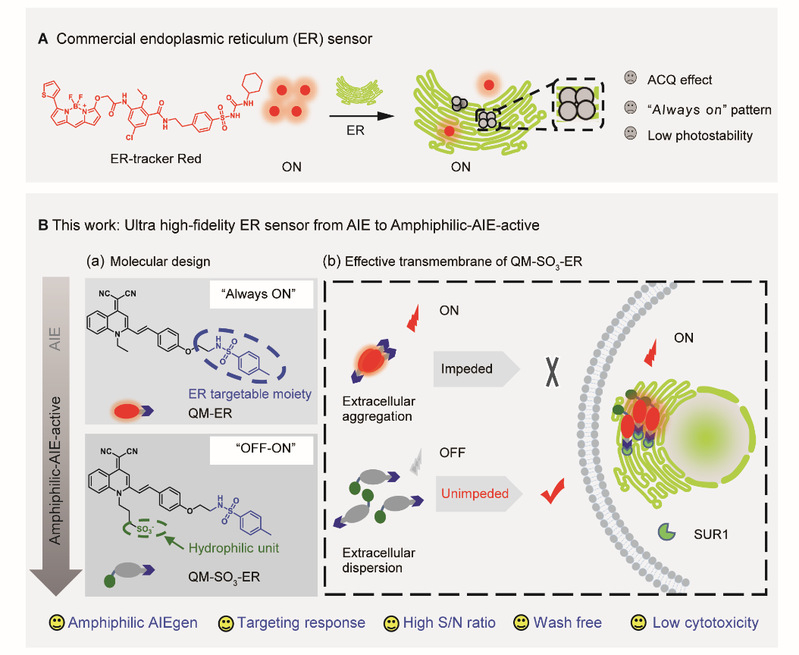
ECUST New Progress in the Research of AIE Endoplasmic Reticulum Fluorescent Sensor Published in National Science Review
Aggregation-induced luminescent materials (AIEgens) only emit light in aggregation state, and have been widely used in biological imaging and disease detection. However, the imaging specificity of traditional AIE fluorescent sensors in organisms is poor. This is because there are both water-soluble and fat-soluble environments in biological cells, while traditional AIE fluorescent dyes usually only dissolve well in a single environment, but easily aggregate and emit light in another environment, resulting in background noise or false positive signals.

Recently, The research team of Professor Zhu Weihong from East China University of Science and Technology (the research team includes Associate Professor Wang Qi, PhD. candidate Zhu Zhirong, etc.) published research papers in National Science Review (NSR), put forward the design strategy of “Amphiphilic AIE”, and designed and synthesized endoplasmic reticulum sensor QM-SO3-ER with good imaging effect and high signal-to-noise ratio.
The above research work has been carefully guided by Academician Tian He, supported by the Frontier Science Center of the Ministry of Education of Materials Biology and Dynamic Chemistry, the Joint Research Center of Nobel Prize Scientists in Feringa, the National Key R&D Program, the General Project of the National Natural Science Foundation of China, and the Shanghai Pujiang Talent Program.